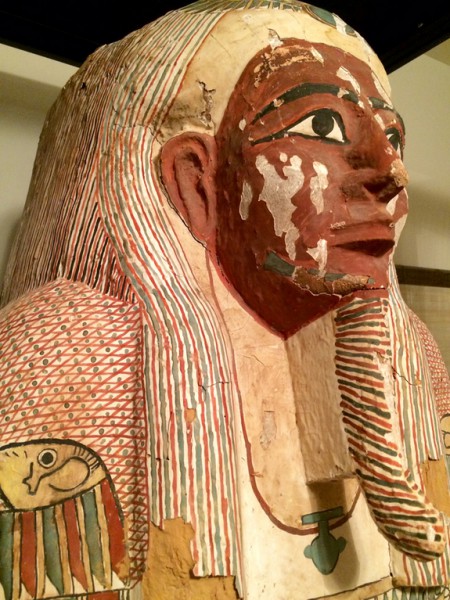
When Egyptologist Gayle Gibson of Toronto’s Royal Ontario Museum showed images of an ancient Egyptian coffin to her colleagues, many assumed it was a fake. However according to Live Science, the poorly executed, unskillfully decorated coffin reflected a chaotic period in ancient Egyptian history shortly after the beginning of Persian rule in 525 BC.
Gibson explained: “Many of the best artists in Egypt were taken by the Persians back to Persepolis and Susa as POWs and war booty. You can see their work in those places. There seems to have been a dearth of masters for some time, so that fewer and fewer artists got proper training.”
For example, the coffin’s collar features two falcons, representative of the ancient Egyptian God Horus, however the ineptly painted birds look more like fish than falcons. Photos of the coffin also show the ancient artists’ awkward attempt to cover up a mistake by scratching some of the pigment off of an alternating pattern to conceal his blunder.
Gibson presented her colleagues with the results of a radiocarbon dating analysis of the sycamore wood coffin, a material commonly used in ancient Egypt. The pigment from the paint was determined to be Egyptian blue, indicating that the coffin dated to ancient Egypt’s Persian era. “I think there is really no doubt that this one is genuine,” she told Live Science.